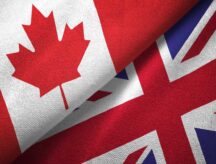Fall Economic Statement highlights strategy to increase the supply of affordable housing in Canada
Canada’s Finance Minister Chrystia Freeland released the Fall Economic Statement for 2023 on November 21.
The Statement acts as an update to the progress of Canada’s economic plan since the release of Budget 2023. It also builds on plans already in motion to reflect the current state of the economy.
For example, the Statement acknowledges the affordability crisis surrounding housing in Canada. This is something that can pose a challenge for newcomers who are trying to establish themselves in their communities.
Discover if You Are Eligible for Canadian Immigration
Many economists, as well as Canada’s government, say the biggest issue in housing affordability is a lack of supply to meet the demand. Canada’s population has surpassed 40 million people this year and will continue to rise.
Bringing in skilled workers to build more houses
One section of the Statement highlights the government's plan to bring more skilled workers to Canada to increase the number of homes being built. It says that Canada is working to prioritize a pathway for construction workers to get permanent residency.
The government says it has delivered on this priority by introducing category-based selection rounds of Express Entry invitations earlier this year.
In these new categories, Immigration, Refugees and Citizenship Canada (IRCC) may issue Invitations to Apply (ITAs) to Express Entry candidates who have a specific attribute, rather than inviting candidates with an overall high Comprehensive Ranking System (CRS) score.
There were six new categories announced for those with occupations in:
- Healthcare;
- STEM professions;
- Trades;
- Transport;
- Agriculture and agri-food; or
- Strong French proficiency
Since the first category-based selection invitations were issued in late June, IRCC has invited 16,900 Express Entry candidates to apply in targeted draws.
Among them, 1,500 candidates have been invited from the Trades category in a single draw on August 1. The Statement says these candidates had occupations in carpentry, electrical, welding, plumbing, contracting, and other trades that can help build more homes.
In contrast, the department has invited 7,700 French-speaking candidates and 5,600 healthcare candidates. Occupations were not specified among French-speaking candidates.
Following the introduction of category-based selection draws for Express Entry candidates, IRCC has also invited many candidates in untargeted, all-program draws so it is likely some candidates held trades occupations as well. However, there has not been an Express Entry draw at all since October 26.
In the recently released Immigration Levels Plan 2024-2026, IRCC has set targets for 485,000 new permanent resident admissions in 2024 and 500,000 per year in both 2025 and 2026. Immigration Minister Marc Miller says the department will be pursuing a more comprehensive, whole-of-government approach to immigration in future to ensure that there is adequate infrastructure, such as affordable housing, in place for newcomers.
Foreign credential recognition and interprovincial labour mobility
The Statement also says Canada has been working to enhance the Foreign Credential Recognition Program to help newcomers gain relevant work experience. It also seeks to improve coordination with the provinces and territories to make credential recognition more efficient.
Efforts are also being made to improve inter-provincial labour mobility. Newcomers, and Canadians, may be reluctant to pursue professions that require a license, as is often the case with healthcare or trades occupations, because they will have to get a new license if they decide to relocate to another province or territory.
To help incentivize skilled workers in Trades, Canada has already introduced a new labour mobility tax deduction of up to $4,000 per year for temporary relocation expenses for tradespeople.
Canada Mortgage Charter
A highlight of the Statement was the introduction of the Canada Mortgage Charter to assist homeowners who are struggling to pay their mortgages in the face of rising costs and interest rates.
The new Charter will make it a requirement for financial institutions to work with homeowners in financial difficulties by:
- Allowing temporary extensions of the amortization period for mortgage holders at risk;
- Waiving fees and costs that would have otherwise been charged for relief measures;
- Not requiring insured mortgage holders to requalify under the insured minimum qualifying rate when switching lenders at mortgage renewal;
- Contacting homeowners four to six months in advance of their mortgage renewal to inform them of their renewal options;
- Giving homeowners at risk the ability to make lump sum payments to avoid negative amortization or sell their principal residence without any prepayment penalties; and
- Not charging interest on interest in the event that mortgage relief measures result in a temporary period of negative amortization.
The Statement also reminded Canadians that as of September this year Federal government has increased the annual limit of support to the Canada Mortgage and Housing Corporation (CMHC) for low-cost financing by $20 billion per year.
This funding is designated for the funding of mortgages on multi-unit (at least five units) rental projects insured by CMHC. The government says this will help build up to 30,000 more rental apartments per year.
- Do you need Canadian immigration assistance? Contact the Contact Cohen Immigration Law firm by completing our form
- Send us your feedback or your non-legal assistance questions by emailing us at media@canadavisa.com





